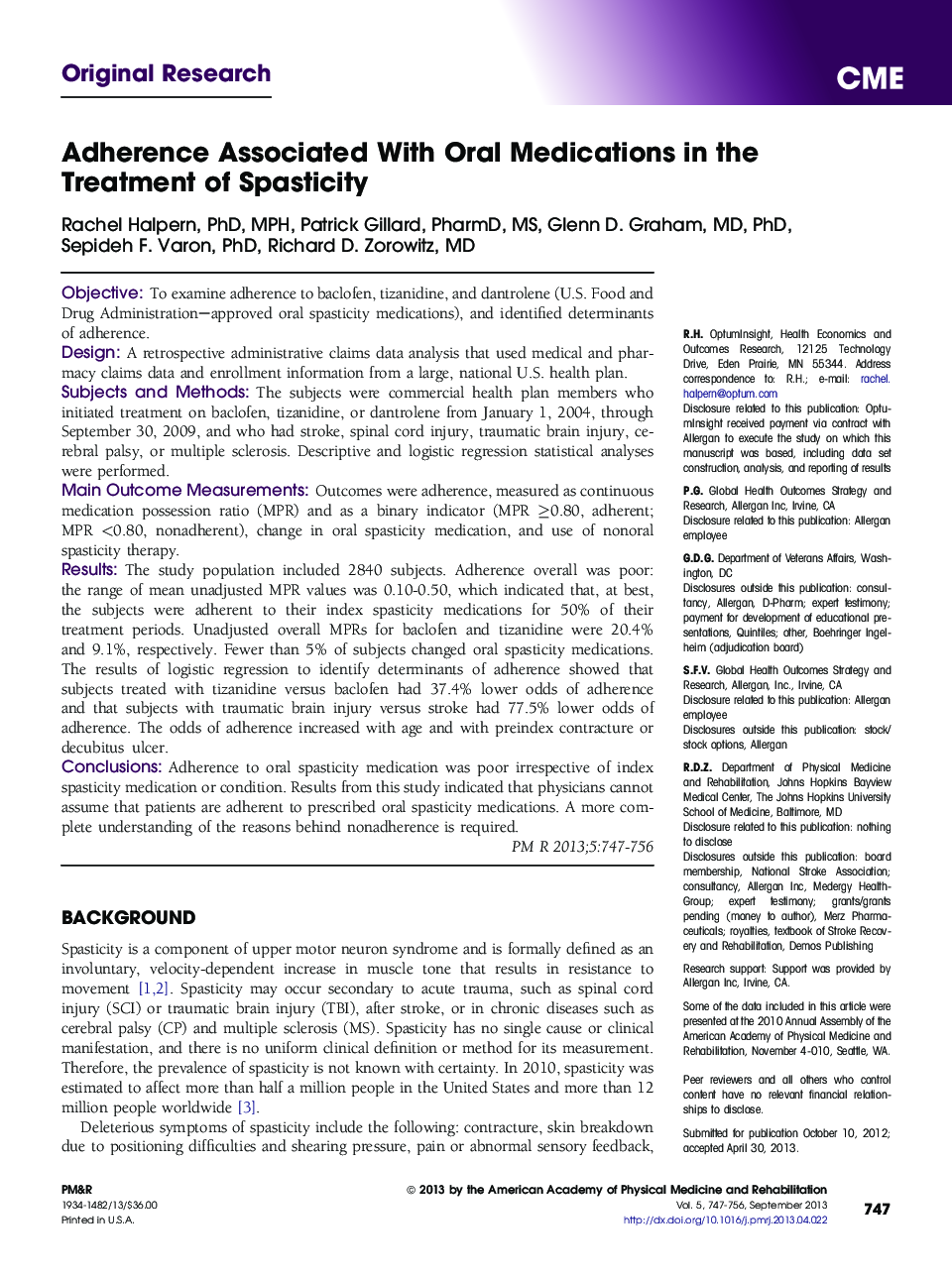| Article ID | Journal | Published Year | Pages | File Type |
|---|---|---|---|---|
| 2705210 | PM&R | 2013 | 10 Pages |
ObjectiveTo examine adherence to baclofen, tizanidine, and dantrolene (U.S. Food and Drug Administration–approved oral spasticity medications), and identified determinants of adherence.DesignA retrospective administrative claims data analysis that used medical and pharmacy claims data and enrollment information from a large, national U.S. health plan.Subjects and MethodsThe subjects were commercial health plan members who initiated treatment on baclofen, tizanidine, or dantrolene from January 1, 2004, through September 30, 2009, and who had stroke, spinal cord injury, traumatic brain injury, cerebral palsy, or multiple sclerosis. Descriptive and logistic regression statistical analyses were performed.Main Outcome MeasurementsOutcomes were adherence, measured as continuous medication possession ratio (MPR) and as a binary indicator (MPR ≥0.80, adherent; MPR <0.80, nonadherent), change in oral spasticity medication, and use of nonoral spasticity therapy.ResultsThe study population included 2840 subjects. Adherence overall was poor: the range of mean unadjusted MPR values was 0.10-0.50, which indicated that, at best, the subjects were adherent to their index spasticity medications for 50% of their treatment periods. Unadjusted overall MPRs for baclofen and tizanidine were 20.4% and 9.1%, respectively. Fewer than 5% of subjects changed oral spasticity medications. The results of logistic regression to identify determinants of adherence showed that subjects treated with tizanidine versus baclofen had 37.4% lower odds of adherence and that subjects with traumatic brain injury versus stroke had 77.5% lower odds of adherence. The odds of adherence increased with age and with preindex contracture or decubitus ulcer.ConclusionsAdherence to oral spasticity medication was poor irrespective of index spasticity medication or condition. Results from this study indicated that physicians cannot assume that patients are adherent to prescribed oral spasticity medications. A more complete understanding of the reasons behind nonadherence is required.
